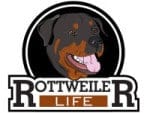Dogs are often referred to as a man’s best friend, a relationship that started almost 23,000 years ago when people domesticated dogs for security, help, and warmth in Siberia. Dogs are loyal, friendly, and protective, making them an ideal species to keep around as pets; their only expense is food and care. Furthermore, dogs have provided psychological therapy to veterans, civilians, and even other animals.
Dog Energy Needs
A dog’s energy needs depend upon a host of different factors, including the type of breed, level of activity – resting or active, gender, environment, type of activity the dog is engaged in, e.g., hunting, racing, or working, age, size and weight of the dog. An appropriate way of measuring your dog’s energy needs is multiplying the specific dog’s weight by 0.75 and multiplying the result again by 70.
For example, a typical 10 kg dog needs 400 calories in a day using the above formula. Pet dogs that stay in the house seem to require less energy than working dogs.
Calories In Dog Food
Resting or pet dogs require 100 calories for smaller dogs and 1000 calories for large dogs. Dogs with moderate activity require 200-1200 calories and dogs with high activity levels require 450-2100 or more calories to ensure their bodies can function properly.
Dry dog food contain between 300 to 600 calories per pound, which is why you need to keep watch of your dog’s diet to avoid underfeeding or overfeeding. You can visit a pet store like Whiskers N Paws for natural dry dog food and kibbles, so you’re sure that your four legged friend will enjoy healthy food. Semi-moist food ranges between 80 to 90 calories per pound, while wet dog food has the lowest calories at 20-30 calories per pound. Food labels are a good source of information on how many calories the particular dog food you buy contains.
How Many Claories Is Enough
Proper dog food should ideally contain fats, proteins, and carbohydrates to ensure the dog gets the needed calories for the day. Fats contain the highest calorie count at 8-9 calories per gram, while carbs and proteins only have 3-4 calories per gram. However, a balanced diet is more important to a dog than just reaching the required daily calorie count. To ensure your chosen food has the right amount of calories, dog food manufacturers usually provide the nutrient contents on the labels, which you can use to calculate the correct number of calories contained within. Multiply the fat amount by 8.5 and the carbohydrate and protein amounts by 3.5 to get the accurate number of calories in the food.
Moreover, it would be best to look for foods containing either chicken meals, meat meals, fish meals, or high protein meals. However, avoid any foods that contain soy, wheat, or corn as they are not suitable for dogs. Remember, dogs are carnivores that need high proteins to survive and obtain essential nutrients such as amino acids. Therefore any vegan type of food should be avoided if possible.
Four hundred calories a day is average for most dogs. A well-balanced high protein diet will provide your dog with a well-functioning digestive system, a smooth skin and muscle tone, and additional energy for pregnancy, healing, and growth.
Monitoring System For Body Condition
However, even if you feed your dog the proper diet, you may need to check it often for any underlying problems affecting it. Symptoms that your dog may be unwell include; intermittent eating habits where the dog’s appetite varies wildly, excess thirst, rough skin tone, vomiting, uncommon stool characteristics, extra weight loss or weight gain, change in eye color, and a general decrease in activity.
You can use a body condition monitoring system to ensure your dog is regularly monitored for such problems. A BCS exam ranges from score 1 to 9, where an ideal dog should scoring between 4.5 and 5. The first test involves feeling the ribs; if you can feel the ribs by soft-touch, then the dog is at an ideal condition (score 4.5 to 5), whereas if the ribs are too visible, then the dog is emaciated (score 1 or 2), and if it is difficult to feel the ribs the dog is obese (score 6 to 9).
Furthermore, if the dog has a visible waistline, it is healthy (score 5). If the waist is clearly visible, the pet is underweight (score 2 to 4). Lastly, the dog’s hips can tell you where it is healthy, where clearly defined hips denote a healthy dog, and lack of muscle shows a thin dog.
Conclusion
A dog that gets its required calories daily will have well-toned skin, fleshy muscles and be healthy enough to perform tasks, keep you secure, and keep you company.



